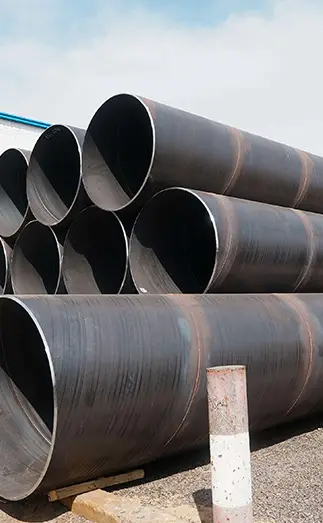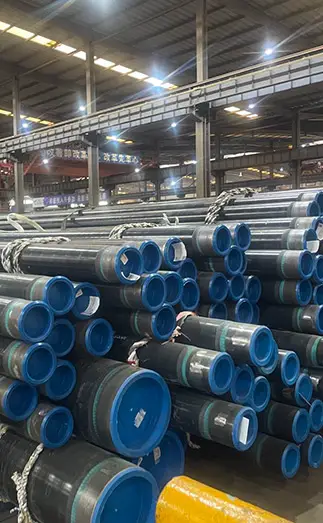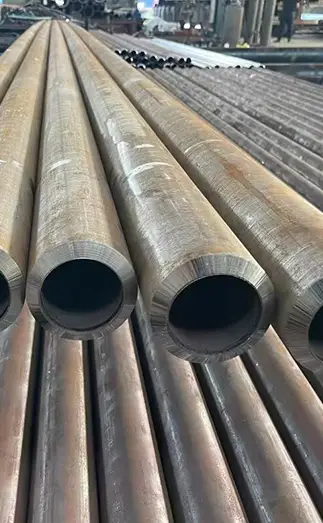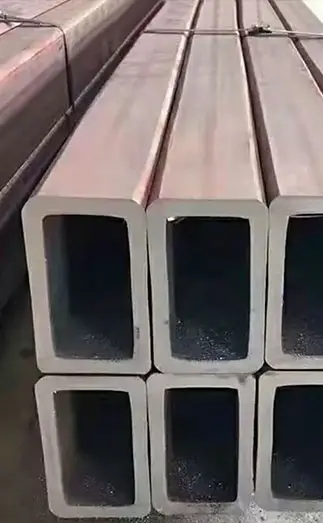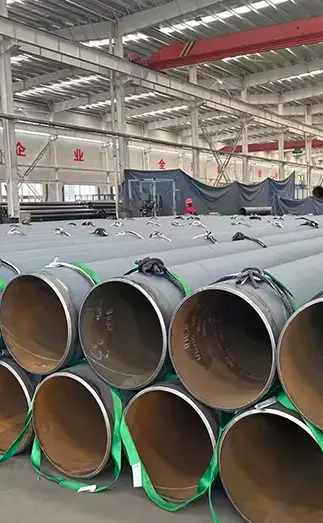In the oil and gas transportation sector, API 5L X100M straight seam welded steel pipe—as a flagship grade of high-strength pipeline steel—is reshaping engineering standards with its outstanding mechanical performance and application adaptability. Produced through high-frequency resistance welding (ERW) or submerged arc welding (SAWL), X100M achieves a minimum yield strength of 690 MPa, far surpassing the 551 MPa of traditional X80, and offering a next-generation solution for long-distance, high-pressure transmission.
1. Breakthrough Material Science Behind X100M
The superior performance of X100M originates from its advanced alloy design. Utilizing Nb-Ti-Mo microalloying combined with TMCP (controlled rolling + controlled cooling), X100M achieves refined grain strengthening and precipitation strengthening without compromising weldability.
Leading producers now achieve:
>200 J Charpy impact energy at –45°C for 18.4 mm plates
Performance exceeding DNV-OS-F101 Arctic pipeline requirements
Z-direction performance coefficient >0.8 via Ca treatment—effectively resolving lamellar tearing issues in large-diameter pipes
2. Precision-Controlled Manufacturing
In pipe forming, the JCOE process ensures dimensional accuracy, achieving ±0.5% D ellipticity for 1422 mm × 32 mm products.
In welding, five-wire submerged arc welding, online UT inspection, and 1.5% full-body expansion produce weld quality with a coefficient >0.96.
Real project data from West-East Gas Pipeline III shows:
Weld fatigue life reaches 92% of base metal
~40% higher than X70 straight seam welded pipes
Digital manufacturing achieves 0.1 mm-level precision from plate milling to bevel machining
3. Engineering Value in High-Pressure Transmission
When applied to natural gas pipelines:
Design pressure increases from 12 MPa (X80) to 15 MPa
Gas transmission per pipe rises 25%
Wall thickness decreases 14%
Steel consumption saved by 80,000 tons per 300 km
Its strain hardening index (n ≈ 0.12) allows the pipe to withstand 1.5% plastic strain, meeting the demands of regions with seismic intensity of 8°.
4. A Fully Upgraded Standard System
With the introduction of API SPEC 5L (46th edition), X100M now features a complete technical framework:
DWTT shear area ≥ 85% at –15°C (10% higher than X80)
GB/T 9711-2017 adds HIC A-solution requirement: CLR ≤ 15%
Low-carbon welding designs ensure CEIIW ≤ 0.43%, reducing field cold-cracking risks
5. Environmental Adaptability Breakthroughs
For Arctic applications:
X100M maintains CVN >100 J at –60°C
Arctic projects adopt 3LPE + PP dual-layer coating with cathodic protection, extending design life to 50 years
In marine splash zones:
Added 0.3% Cu + 0.05% Sb alloy
Corrosion rate controlled to <0.08 mm/a, only 20% of standard carbon steel
6. Remaining Industrial-Chain Challenges
Despite its advantages, industrializing X100M still encounters several barriers:
HAZ softening: hardness may drop below 220 HV10
→ mitigated to ~245 HV10 via post-weld induction heating
Field circumferential welding requires heat input <80 kJ/cm
→ e.g., Kobelco MG-S63TW achieves >47 J at –40°C
Automated welding improves CTOD to 0.25 mm, meeting BS 7910 requirements
Future Outlook: A Core Material for Low-Carbon Energy Infrastructure
Under global “dual-carbon” goals, X100M is poised to play a major role in CCUS and supercritical CO₂ pipelines, supporting transport at pressures >15 MPa.
X100M has already been applied in the Canadian Quest project.
Current domestic research explores its performance in 90% H₂S + 10% CO₂ extreme environments:
Lowering Mn <1.2%
Adding 0.02% Ti
→ raises SSC critical stress to 85% SMYS
By 2030, global demand for X100M straight seam welded steel pipes is expected to exceed 3 million tons annually, positioning it as a key material for next-generation energy systems.



 English
English Español
Español Français
Français بالعربية
بالعربية